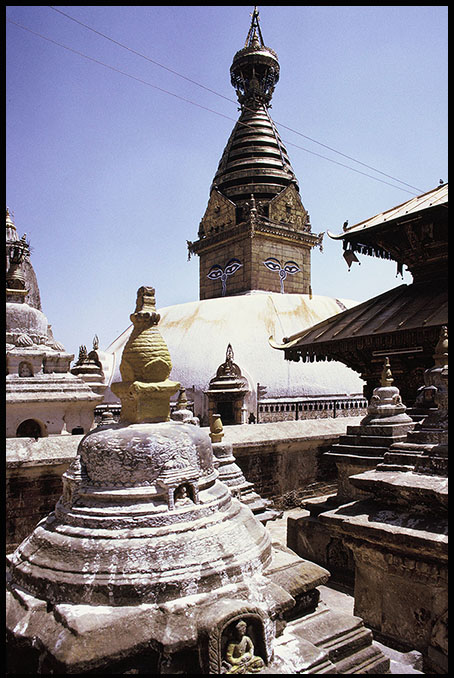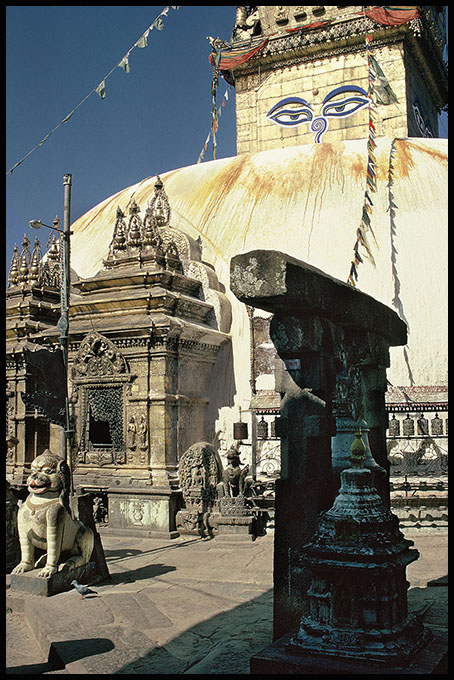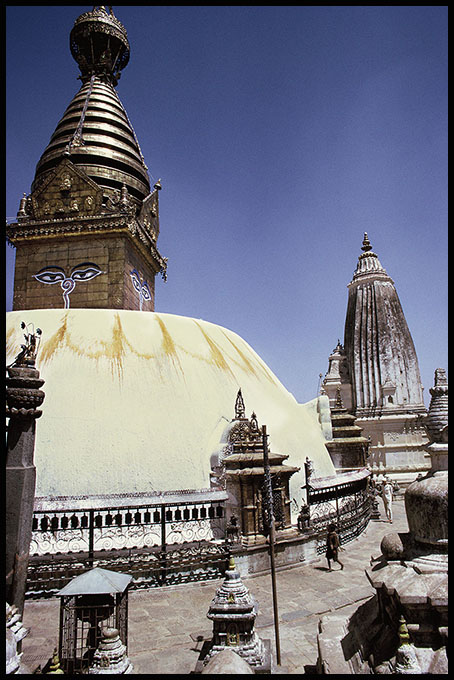In the 1970s I visited Nepal and spent some time at Swayambhu …
The Swayambhu complex
consists of a stupa, a
variety of shrines and temples, some dating back to the Licchavi period. A
Tibetan monastery, museum
and library are more recent additions. The stupa has Buddha's eyes and eyebrows
painted on. Between them, the number one (in Devanagari script) is painted in
the fashion of a nose. There are also shops, restaurants and hostels.
The site
has two access points: a long stairway with 365 steps, leading directly to the
main platform of the temple, which is from the top of the hill to the east; and
a car road around the hill from the south leading to the southwest entrance.
The first sight on reaching the top of the stairway is the Vajra. Tsultrim Allione
describes the experience:
We were breathless and
sweating as we stumbled up the last steep steps and practically fell upon the
biggest vajra (thunder-bolt scepter) that I have ever seen. Behind this vajra
was the vast, round, white dome of the stupa, like a full solid skirt, at the
top of which were two giant Buddha eyes wisely looking out over the peaceful
valley which was just beginning to come alive.
Much of Swayambhu's iconography comes from the
Vajrayana tradition of Newar Buddhism.
However, the complex is also an important site for Buddhists of many schools,
and is also revered by Hindus.


